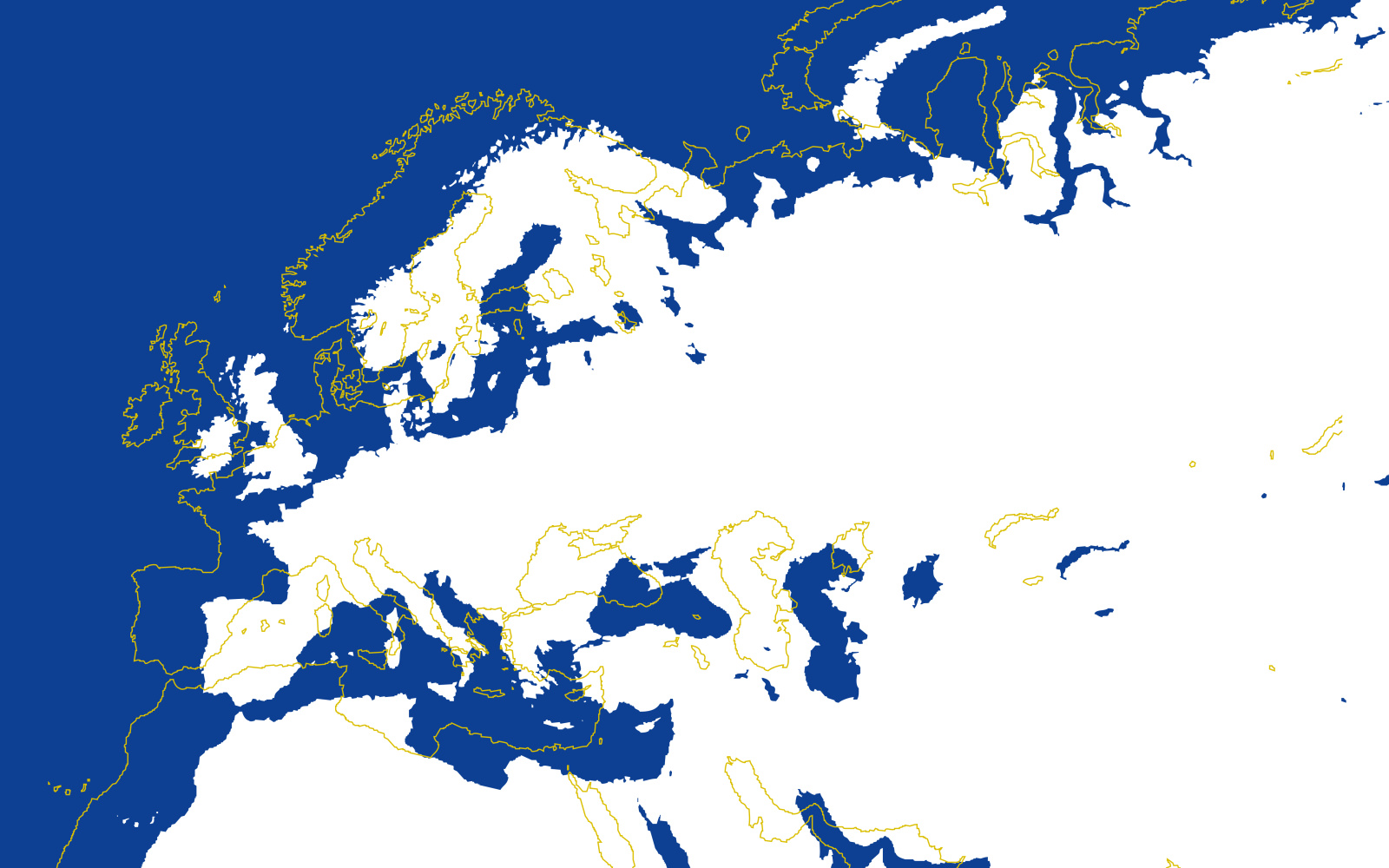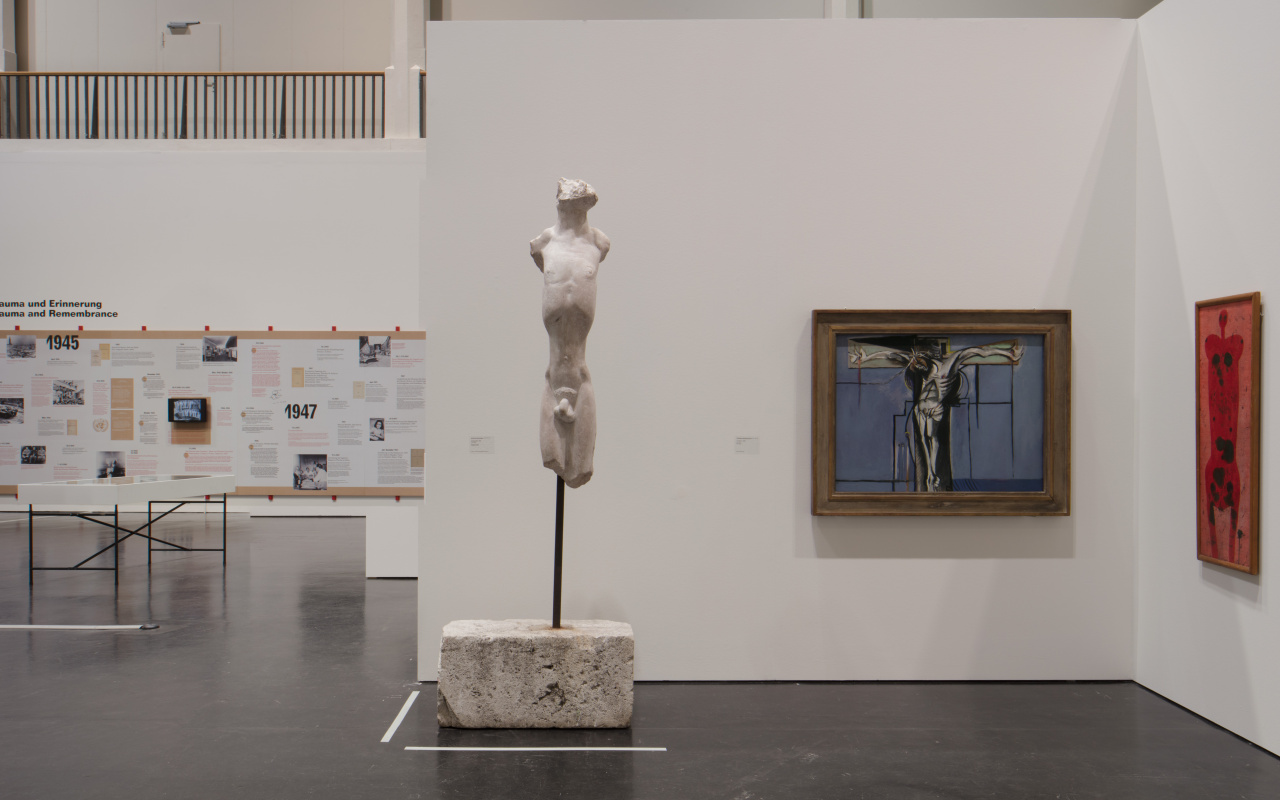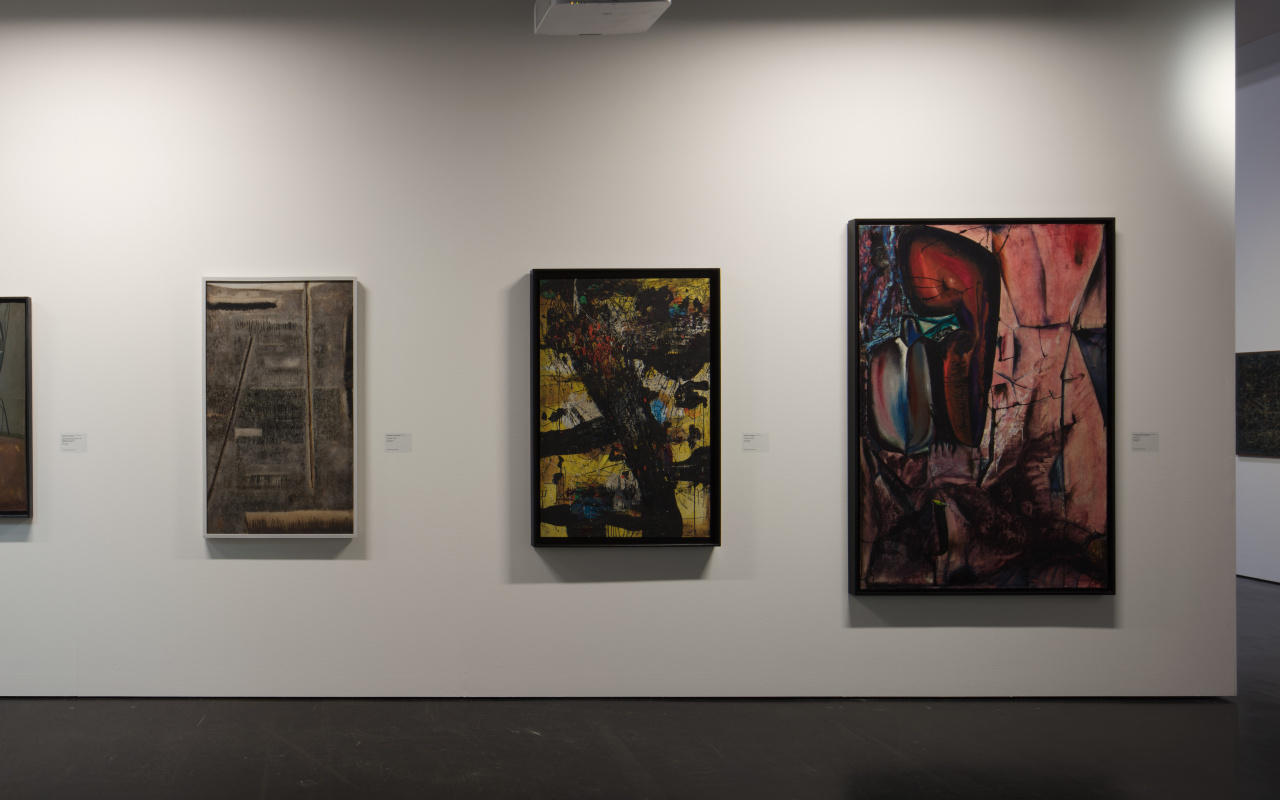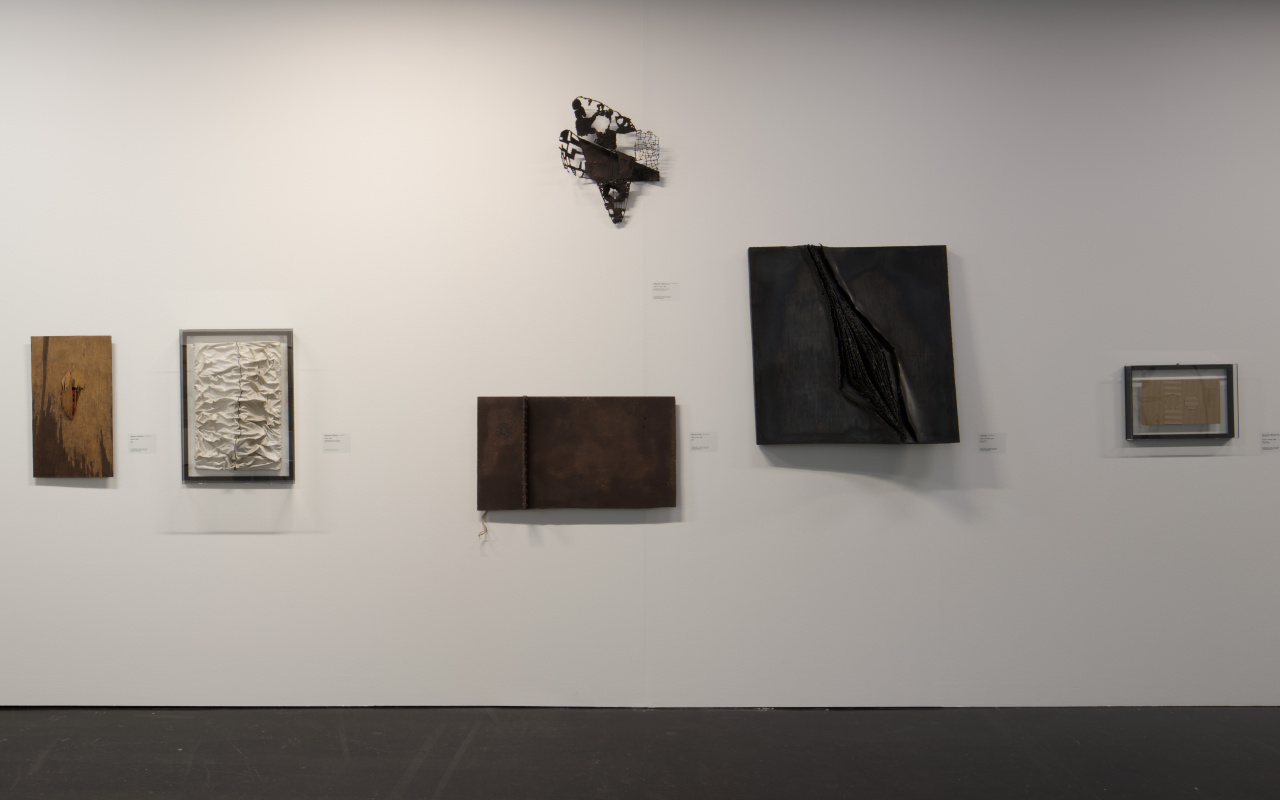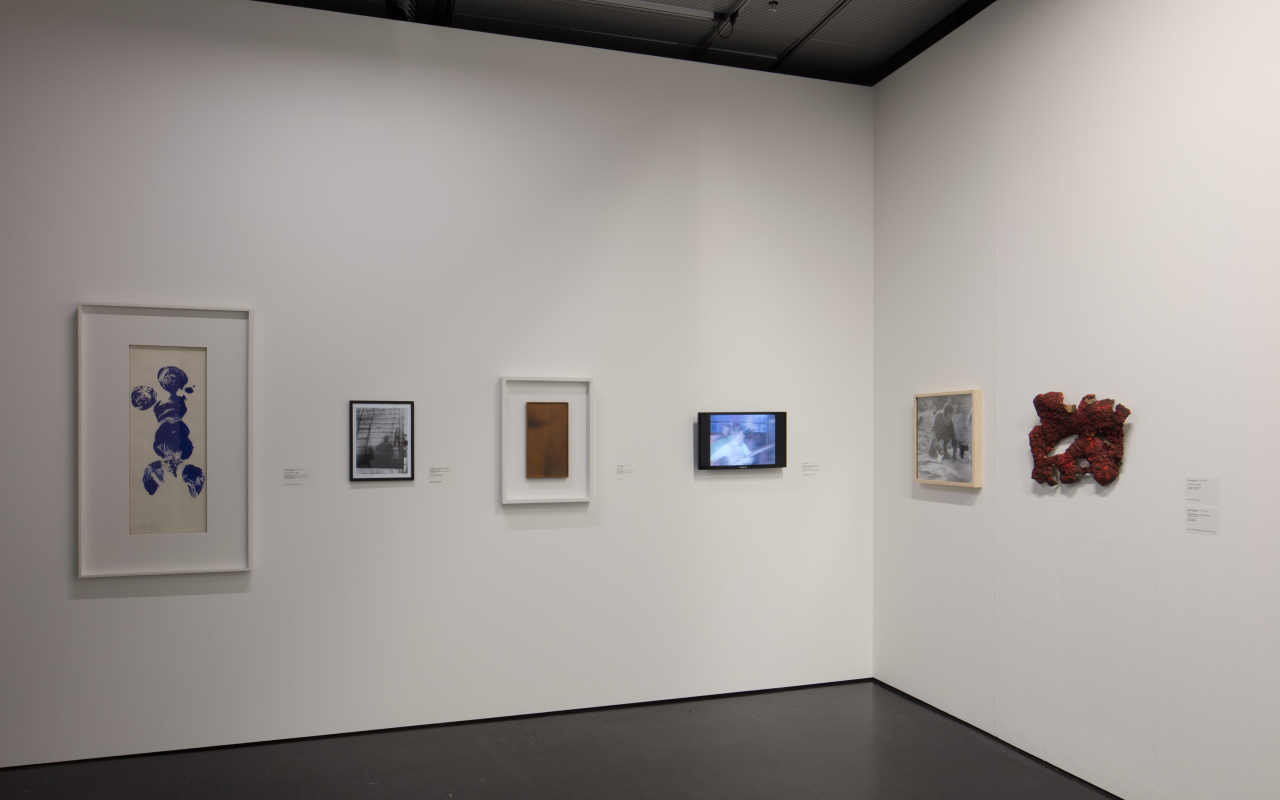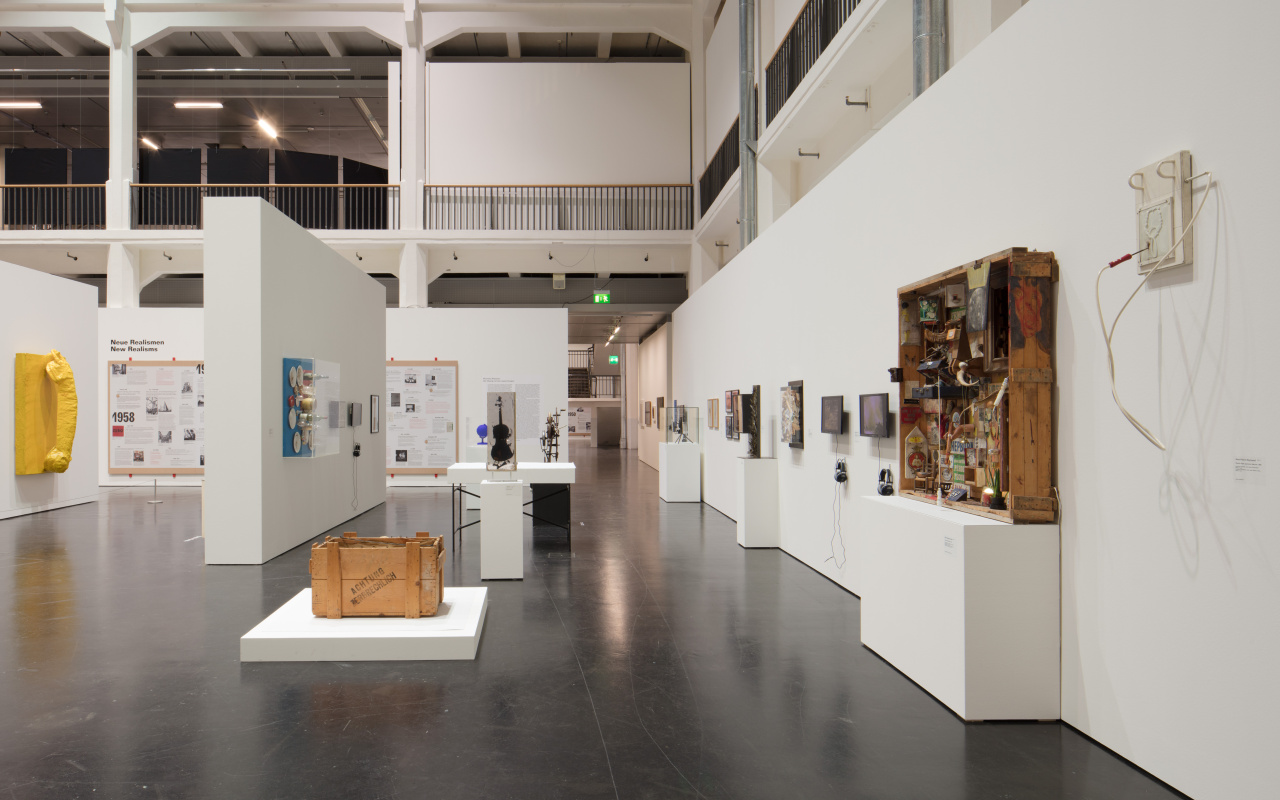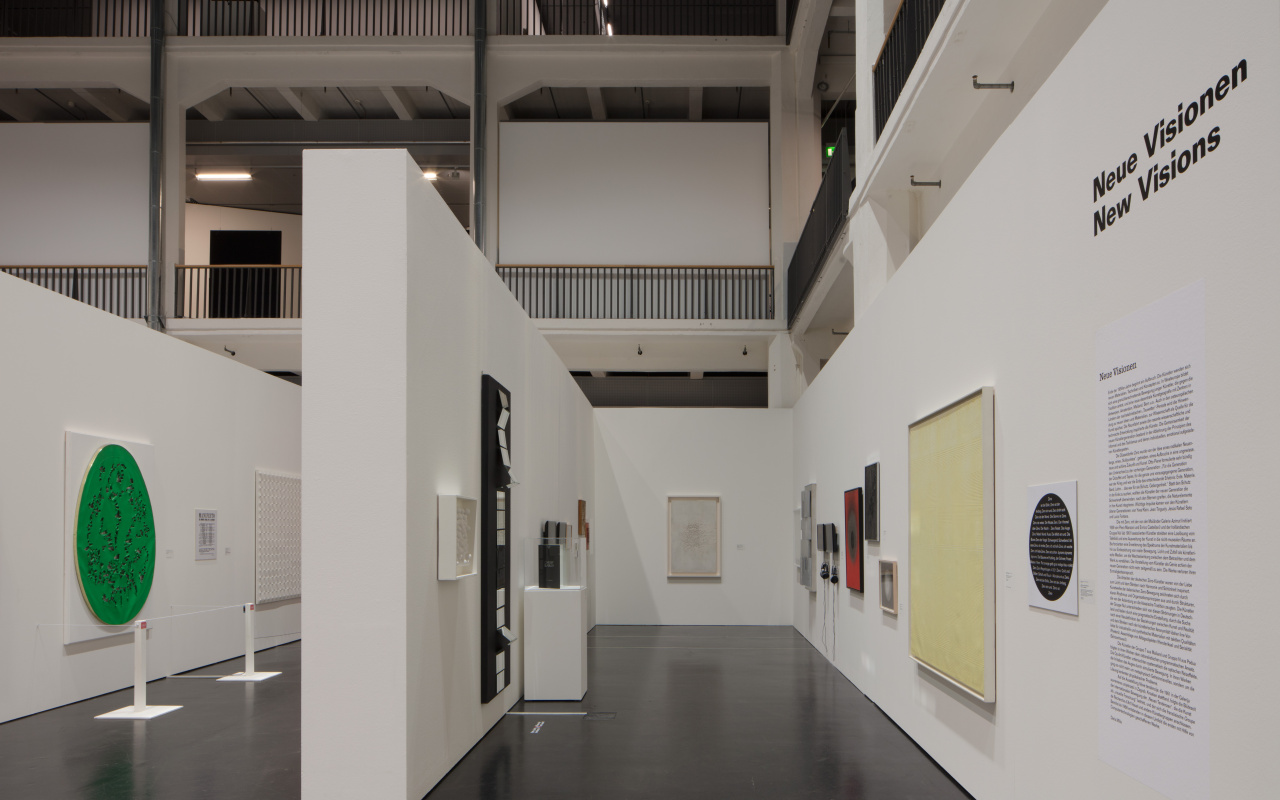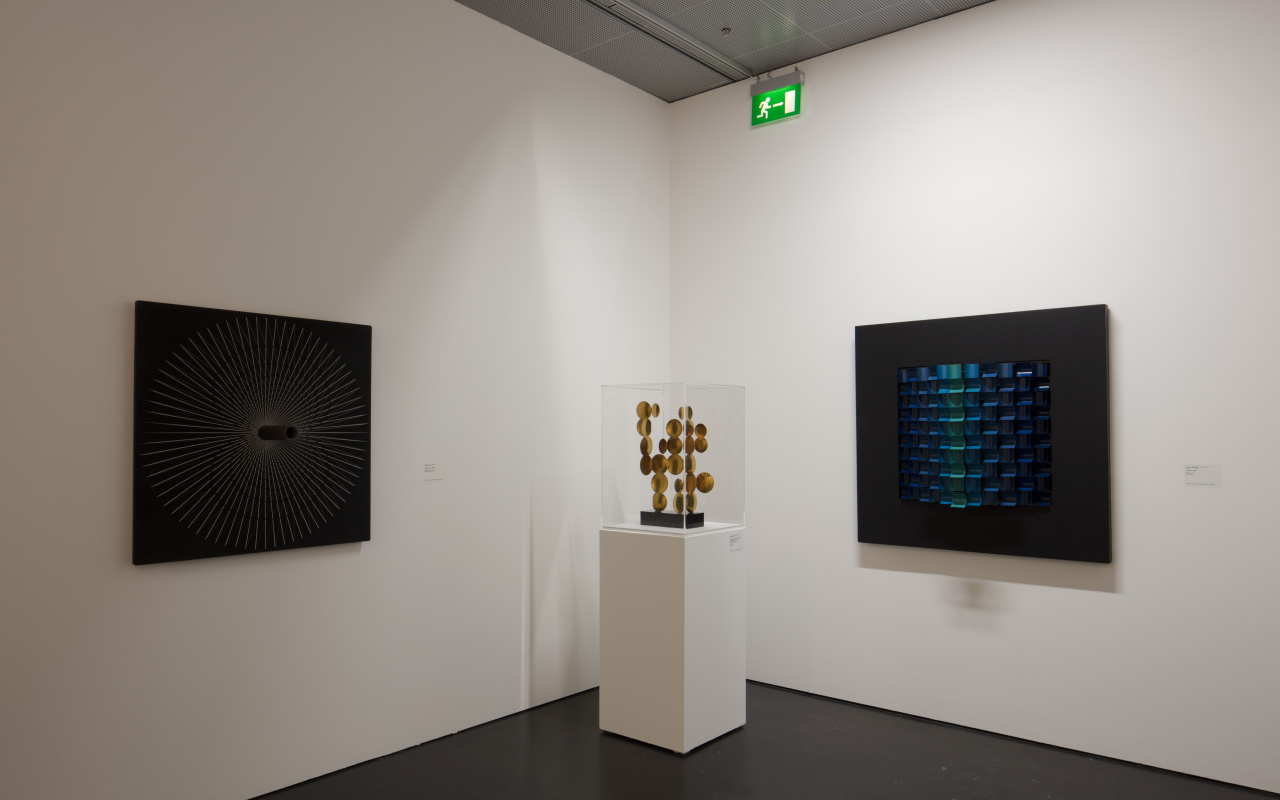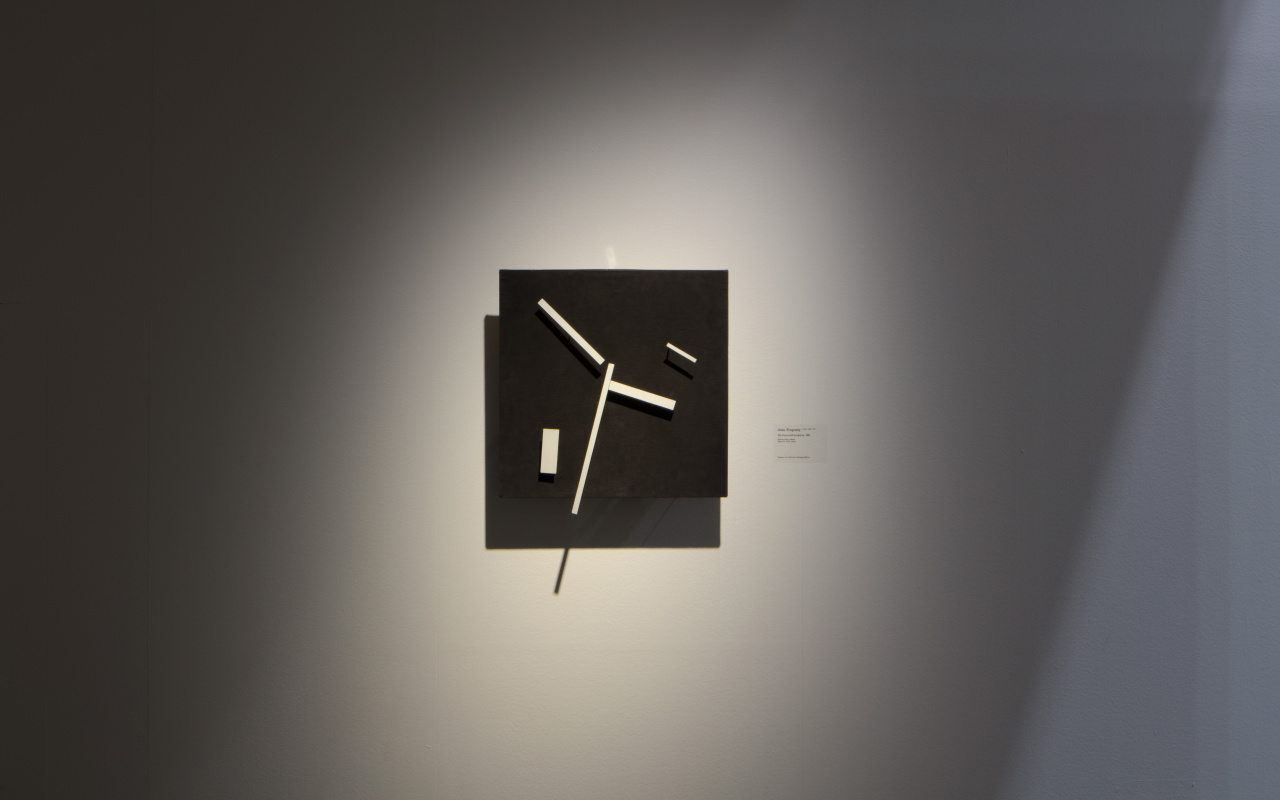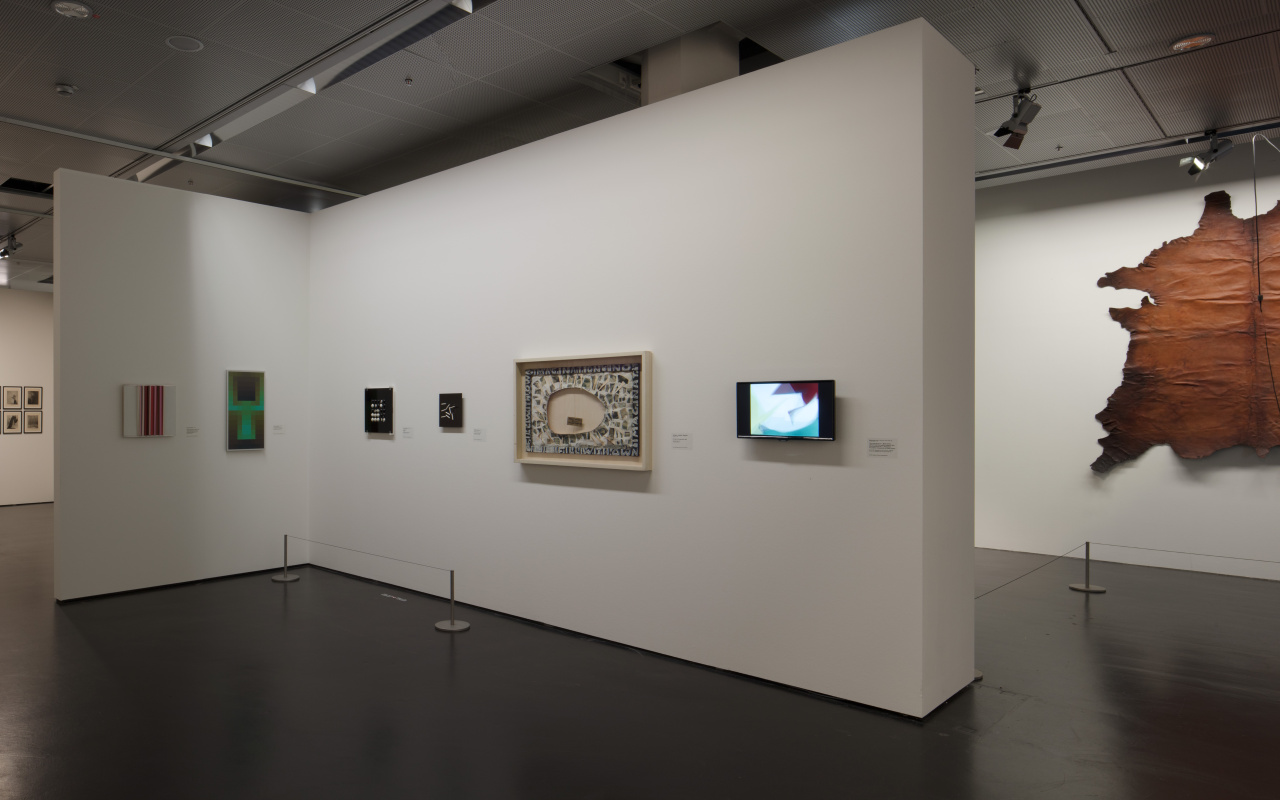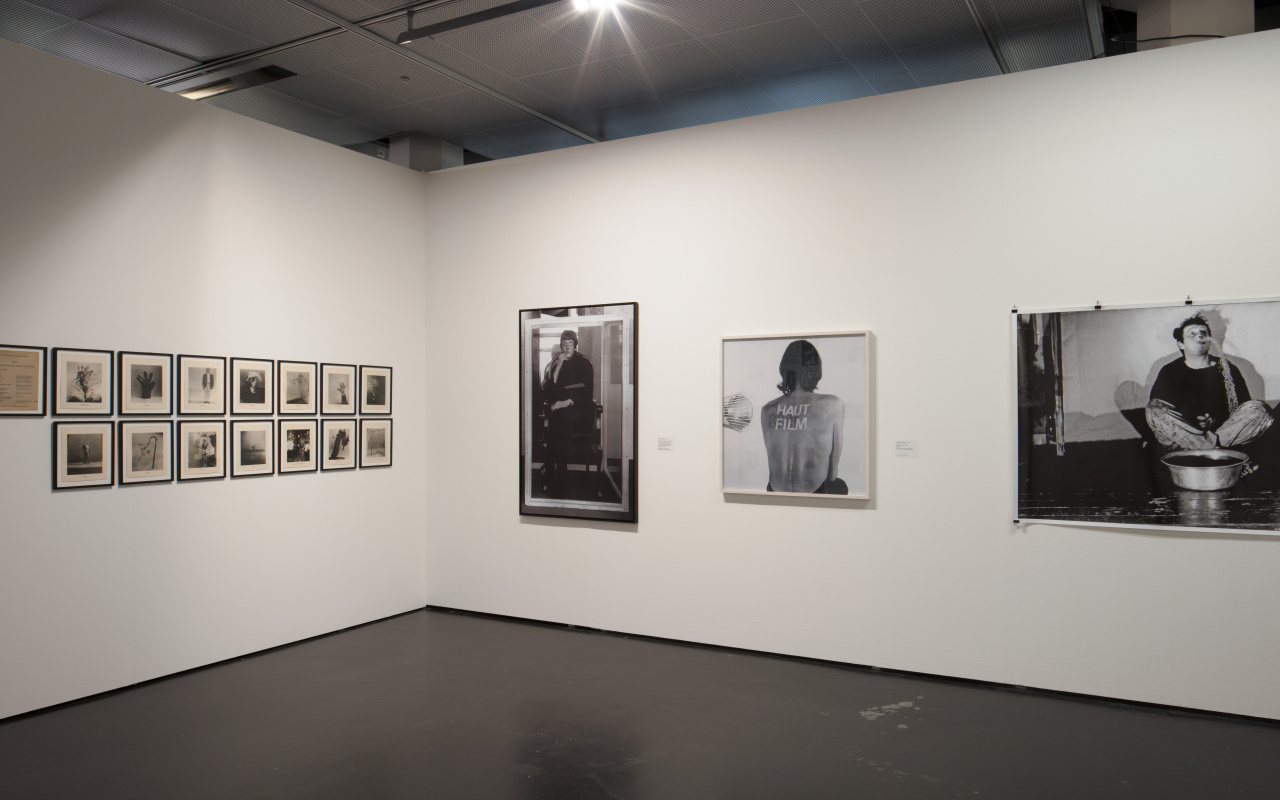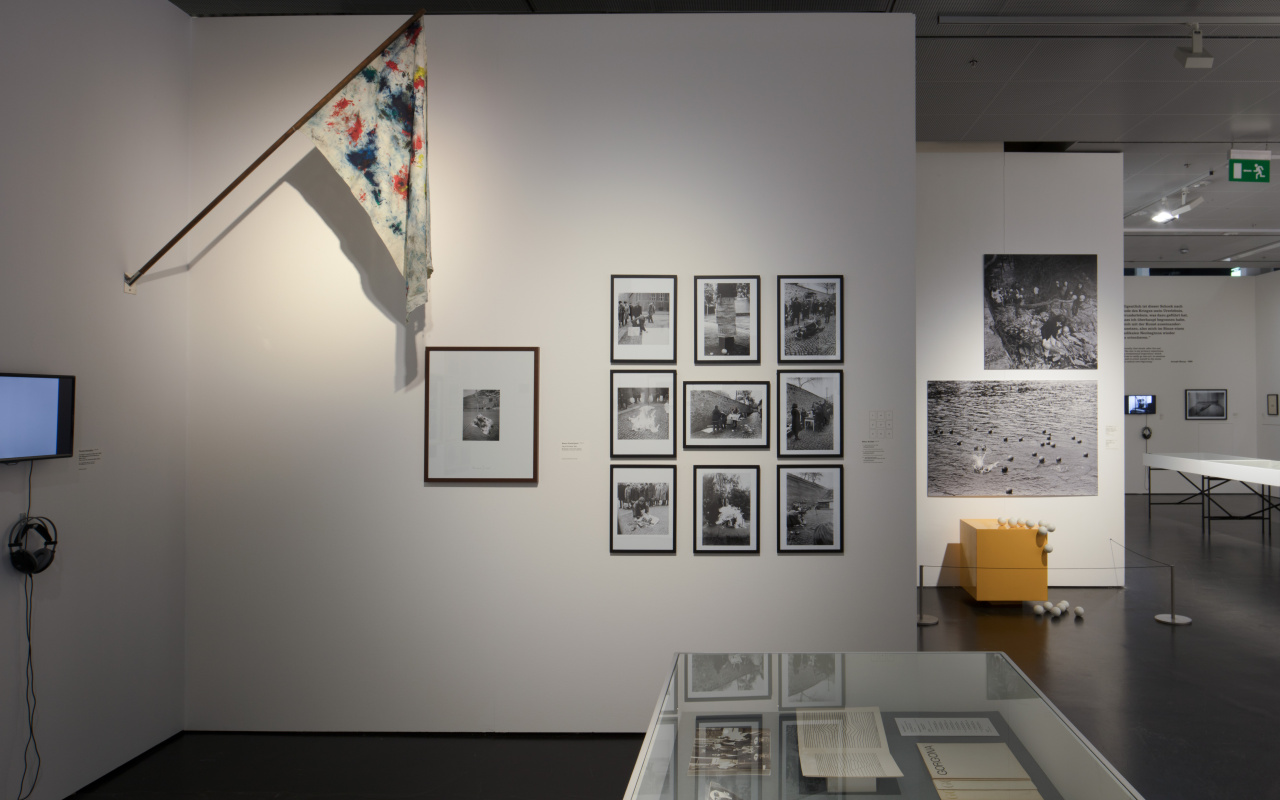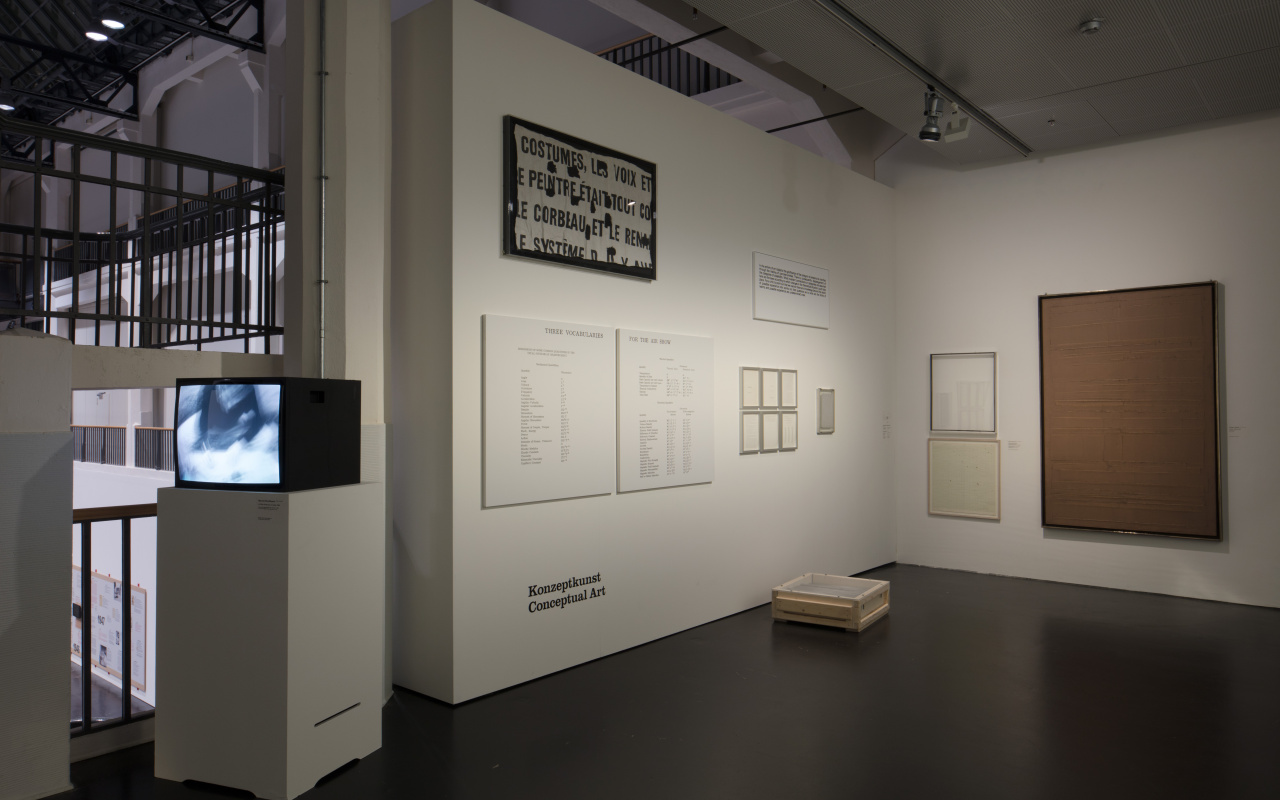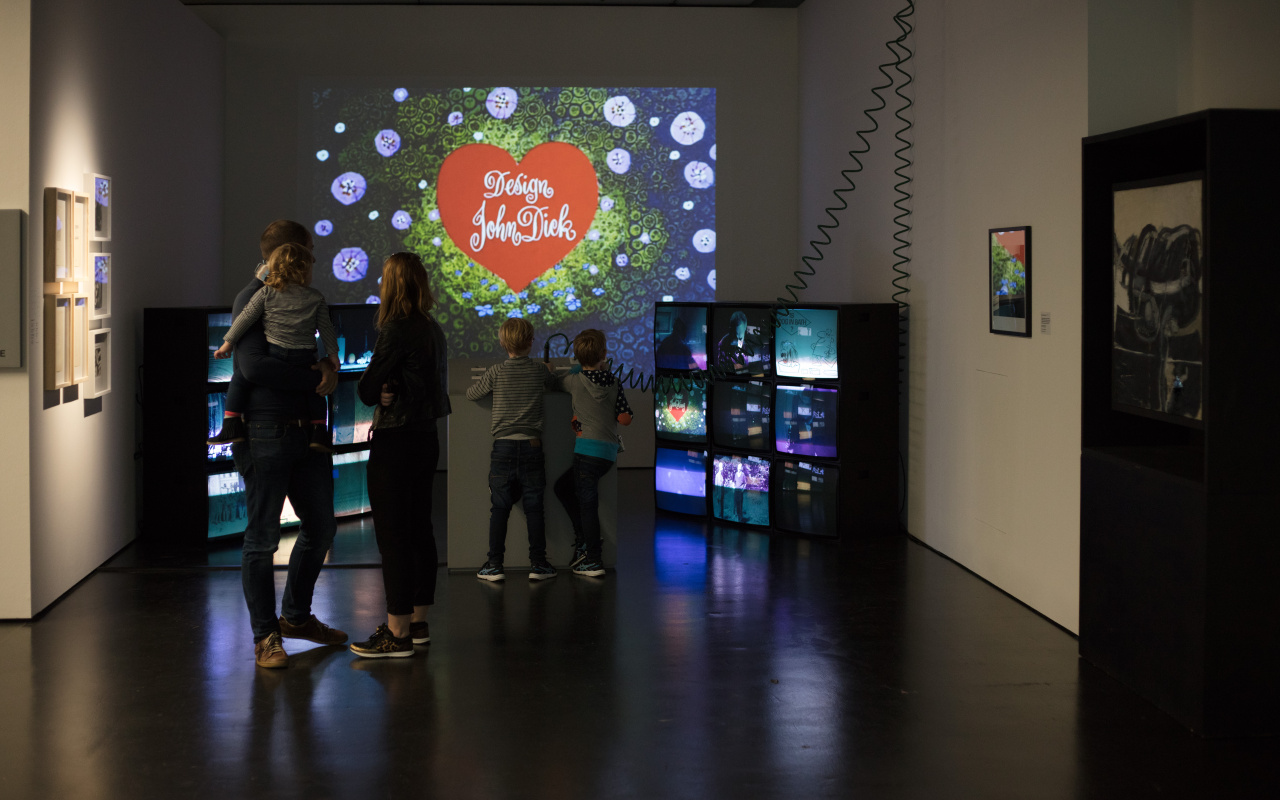New Narrative in Ten Phases
The Development of Art in Europe after 1945
One of the key arguments of the exhibition »Art in Europe 19451968« can be described in ten phases. They show how art slowly frees itself from the state of being a prisoner of trauma and discovers new non-classical means of expression. Art replys to the traumatic experiences of persecution, expulsion, mutilation and destruction with absurd theater, nonsense, nihilism and neo-dada etc., but also with daringness, resistance and reconstruction, with rupture and departure.
Phase 1: Trauma and Remembrance
The end of the Second World War left Europe at the “degree zero” of meaning and being. The efforts of European art to free itself from the trauma of destruction (world war, Holocaust, Gulag, nuclear bomb) progress, through a number of phases. The representation of ravaged houses and human bodies is initially premodern, i.e. figurative, in the form of »Schmerzensbilder« [pain images and sculptures].
Phase 2: Abstraction
The crisis of representation and the uncertainty whether the horror of barbarism could even be portrayed figuratively bring forth abstraction, in painting and sculpture. Informel and Tachism are examples of this reduction, focused on the self-representation of the means of representation, which are distorted and distressed. Phases 1 and 2 are subject-centered expression art.
Phase 3: Material Painting, or the Crisis of Panel Painting
The tabula rasa includes the means of representation themselves. In the 1950s, the Italian material painting substitutes iron, cement, and gunny for canvas and oils. The painting becomes an object.
We see the degree zero of the easel painting. The picture vanishes, the panel remains. Representation gives way to real materiality. During the 1960s Arte Povera extends the »polimaterici« of material painting to the spatial and installational.
Phase 4: The Self-Destruction of the Means of Representation
Culture has failed in the face of barbarianism. Experienced and observed real destruction are transferred to the means of representation themselves. Pianos, books, canvases are smashed, burnt, and slashed. As a prisoner of trauma, art becomes a "reaction formation" (Anna Freud). The auto-destruction of the representational becomes a trend-setting artistic method in sculpture and painting, literature, music, and film
Phase 5: New Realism, or from Representation to Reality
The refusal and prohibition of representation (T.W. Adorno) drew a determined reply from Raul Hilberg – the insistence on object-centered reality. The phase of escape from trauma begins with the escape from the image. In art, everything that had been representation was, step by step, replaced with reality. A dialogue with real things constitutes the art movement of New Realism, which also declares everyday objects eligible as art. Thus, the mass media and mass production became sources of pop art.
Phase 6: New Visions and Tendencies
The breaks with the historical means of representation and expression were followed by departures into zones of new methods, materials, techniques, and media – in an expansion of the arts. From moving object to moving viewer, from kinetics to cybernetics, from op art to neo-constructivism and Arte programmata, art as research produces new visual experiences presupposing the participation of the audience.
Phase 7: New Forms of Interactivity
The elements of art become modules of variables. Through intervention, the viewer can change works physically. A work of art and its creation becomes programmable, by analog or digital means. The image becomes a form of action, as does sculpture. Instead of works of art we have instructions by the artists, which position the audience in the focus.
Phase 8: Action Art
Art liberates itself from representation in three stages:
1. Action painting, i.e. a painter’s actions performed on a horizontal canvas
2. Show painting, i.e. a painter’s action before a canvas, on a stage and before an audience
3. A painter’s action without a canvas, before an audience.
In action art, the focus is on the artist as a performer. The artist’s actions, demonstrations, happenings, and performances, in combination with the audience's participation and actions, mark the beginning of the performative turn in fine art.
Phase 9: Concept Art
The material phase of art is followed by the tendency of immaterialization. Action instructions for the audience replace action. A description of an exhibition becomes the exhibition, art commentary itself becomes art, linguistic analyses become pictorial forms. From visual poetry to story art, a text-based media art arises – consisting of photographs, films, and neon tubes, combined with objects – creating new relationships between art and philosophy. Language becomes the model, and instead of images, conceptual writing reigns – in concept art. It is an expression of the linguistic turn in art.
Phase 10: Media Art
Movement machines are followed by picture machines, i.e. the apparatus-driven moving picture in the various media: film, video, and computer. The era of media art begins. It constitutes the sum of the preceding representative and realistic strategies, while also opening the space of the imaginary and the virtual – and thus the space of that yet to come. Participation becomes interactivity.
Peter Weibel
Since 1999, the theoretician, curator and artist Peter Weibel (*1944, Odessa), serves as CEO of the ZKM | Center for Art and Media.
